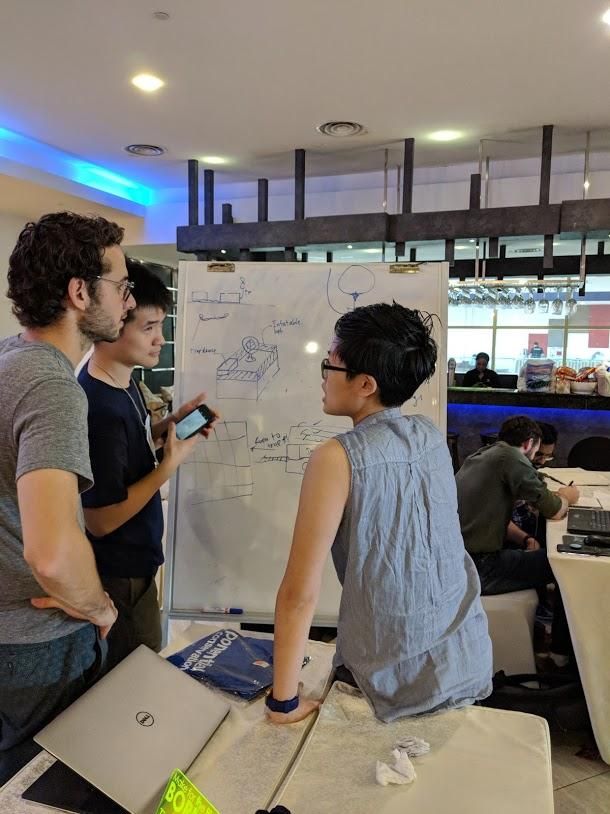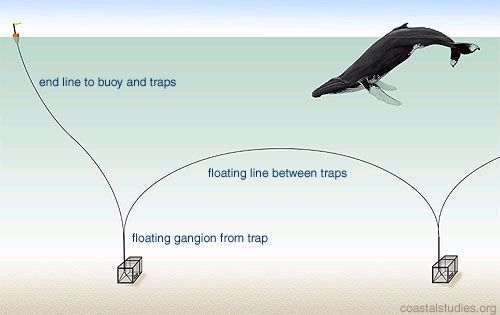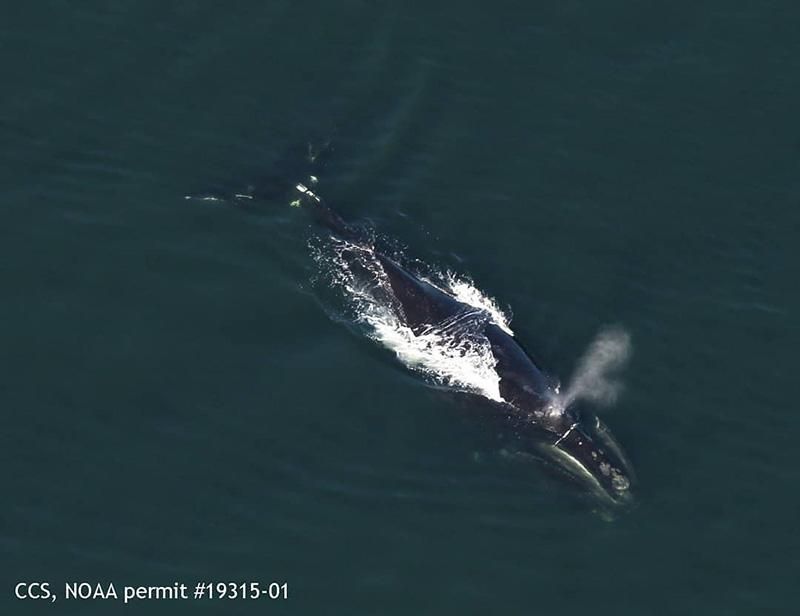This Lobster Trap Aims to Protect Endangered Whales — and Fishers’ Livelihoods
A team of engineers is designing a low-cost, lineless, self-surfacing lobster trap that would prevent right whale entanglement
/https://tf-cmsv2-smithsonianmag-media.s3.amazonaws.com/filer/b0/2f/b02f43ab-de2d-449b-bbae-8310d057a4e6/ll_team_winnings.jpg)
For North Atlantic right whales, 2019 is off to a good start: a right whale calf was spotted swimming with its mother off the coast of Florida in the final days of December. With a right whale population estimated at 411 individuals, and no other babies born last year, every calf counts extra.
After a slow recovery through the latter half of the 20th century following centuries of whaling, today endangered right whales face injuries and death from collisions with ships, and gruesome, energy-draining entanglements in fishing gear—particularly in lobster and crab trap lines. A 2012 study by right whale researcher Amy Knowlton estimated that around 83 percent of all living right whales have been entangled in fishing gear at some point in their lives, as evidenced by the bright white scars the gear leaves on their dark bodies.
So a team of conservation-minded engineers set about finding a solution for the problem of right whale entanglements—while also keeping in mind the needs of lobster fishing families. The winners of last year’s Make for the Planet Borneo hackathon at the 5th annual International Marine Conservation Congress came up with a device they dubbed the Lobster Lift.
Here’s how it works: At its essence, Lobster Lift is a collapsible buoy, triggered to inflate by a unique acoustic signal from its home boat. Attached to one end of a lobster trap line, or trawl, the inflated buoy would carry the first several traps to the surface, where the lobster fisher can retrieve them and haul the rest of the trawl in. To reset the system for its next round, the lobster fisher would need to repack the deflated buoy into the lead trap unit, make sure the buoy’s canister has sufficient air to drag it up again, and throw the whole kit back overboard.
Lauren Shum, Ted Zhu, Cormac Hondros-McCarthy and Parth Sagdeo—a group of friends and professional colleagues—had already been interested in tackling one of the hackathon’s central challenges: reducing “ghost gear.” These fishing lines and traps are lost at sea, but continue to catch, kill and injure untold marine life. The idea for Lobster Lift congealed after the team realized there could be a practical, affordable solution to the specific problem of lobster gear and right whale entanglements, Shum says.

Trawls are typically laid down on the sea floor in chains of three to 20 traps in a row, depending on water depth. A buoy, attached by a long rope that stretches from sea floor to surface, marks the end of the trawl so fishers can retrieve their catch. It is this buoy line that is thought to be the problem, becoming tangled around whale fins, flukes and mouthparts as the animals travel through a fishing ground.
Strict federal and state laws prohibit lobster fishing in Atlantic waters when a right whale is sighted in the vicinity. But that seriously hampers family incomes in an industry dominated by owner-operated boats, says Beth Casoni, president of the Massachusetts Lobstermen’s Association.
Fishers are, however, permitted to continue fishing if their traps avoid the use of the buoy lines. But virtually all of the “ropeless” designs that currently exist are cost-prohibitive for fishers, and field tests of other systems have proved that re-loading the various inflation mechanisms can be time-consuming and tricky. One design involves lacing a length of wire into the trigger mechanism each time the trawl is retrieved. Casoni sets the scene.
“Imagine you’re out at sea, fishing by yourself, and the boat’s listing back and forth, and the wind is screaming,” she says. “And you have to thread this needle with slimy gloves, and do it all really quickly, or risk losing your new, expensive gear.”

Shum’s team’s use of a remotely triggered buoy isn’t unique. But the target price point, and ease of use, is—which Casoni says is what interests her most about Lobster Lift.
For one existing ropeless system, Casoni says her organization was quoted over $600,000 for a set of 200 units to field test—at $2,000 to $3,000 per unit before any discount—just enough for a single boat with 800 lobster pots. And with virtually every cent of profit allocated to some aspect of running the boat, from engine maintenance to replacing worn out gear, most lobster fishers just can’t afford a tech upgrade of that magnitude.
“The cost is exorbitant for ropeless fishing,” Casoni says. “It’s unimaginable that any fisherman will go out and spend hundreds of thousands to a million dollars for this technology.”
By contrast, Shum says the target cost for Lobster Lift is around $150 per unit, based on the current cost of parts—a savings they hope to realize by using inexpensive electronics and off-the-shelf items instead of custom-designed parts.
“We really wanted ease of use for lobstermen at the center-point of our design,” Shum says. “They’ve fished in the same way largely for the last 200 years. So we were trying to think about how to preserve their process, and make something that would be desirable to use.”
And a buoy-line-less system may even speed up the fishing process: instead of waiting while 60 to 300 feet of buoy line is winched up, the lead traps would already be waiting for the fishers on the surface when they arrive.

Though they have yet to test a prototype in the water, Lobster Lift team member Ted Zhu says he and Hondros-McCarthy are currently focusing on the compressed air system and electronics to make a working dry-land version. Waterproof, then submersion-proof, iterations will follow; Casoni says she’s prepared to get a working prototype out for testing as soon as it’s ready, perhaps later in 2019.
The team is also applying for federal grant money to support the project, and still await word on the status of their patent application.
Scott Landry, the director for marine animal entanglement response at the Center for Coastal Studies in Provincetown, Massachusetts, says the problem is compounded by the fact that researchers are still working on understanding how whales feed and move through a region. Humpbacks and right whales have been observed coming to the surface with mud on their heads, suggesting that they may actually root around on the sea floor as they forage. That means that even removing every vertical rope line from the water column may still not be enough.
“Is it possible to catch seafood without rope?” Landry asks. “That’s like saying, go and drive to work, but without the benefit of the wheel. Rope is one of the first technologies we have any record of—it’s elemental. We didn’t say it would be easy, but just to imagine what it might look like to catch a lobster without a rope.”
In a truly ropeless world, Landry adds, lobster pots would all float themselves to the surface, and fishers would no longer suffer accidents from lines under tension at sea. But for now, systems like Lobster Lift and the others are a good start.
“Lobster as a fishery has had thousands of years to develop. We’re not going to solve this problem overnight,” he says.
/https://tf-cmsv2-smithsonianmag-media.s3.amazonaws.com/accounts/headshot/Michelle-Donahue.jpg)
/https://tf-cmsv2-smithsonianmag-media.s3.amazonaws.com/accounts/headshot/Michelle-Donahue.jpg)